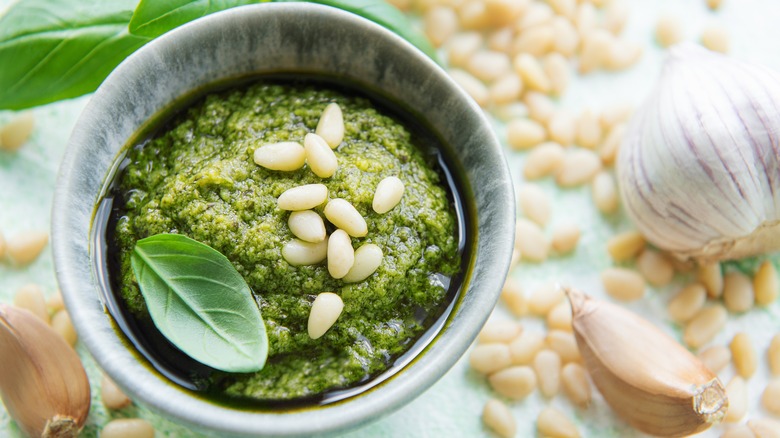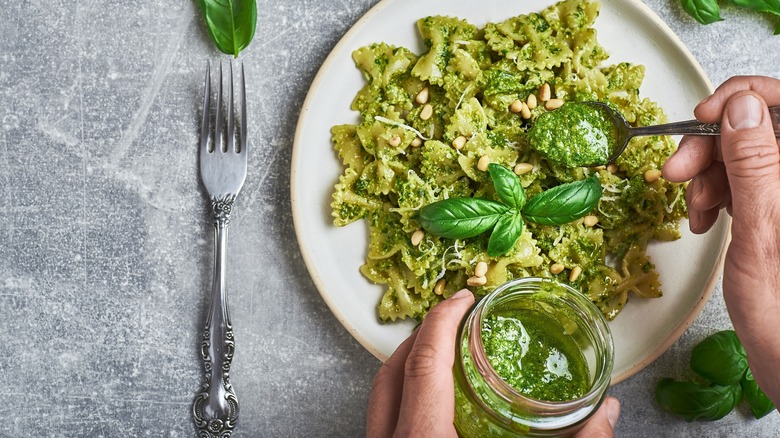Why You Should Think Twice Before Cooking Pesto
A good pesto can elevate any dish, cold or hot. Often made from Genovese basil, extra virgin olive oil, pine nuts, parmesan, and salt, pesto is a fresh yet fatty spread that adds depth to pasta, salads, and sandwiches. However, there is a rule to utilizing this delicate Italian paste. In fact, you may have seen the viral pesto egg recipe that's been floating around TikTok, where people spoon some of the paste onto a hot skillet and crack their egg on it (via Foody Schmoody). While this recipe is an ingenious combination of flavors, this specific cooking method might not be the best way to add that distinctly peppery and herby sauce to your breakfast.
High-quality pesto is always made fresh because individual ingredients like basil and parmesan are perishable. When you make good pesto at home using fresh basil and extra virgin olive oil, you need to recognize how fragile it is, especially when it is exposed to high temperatures.
Pesto degrades in heat
The heat breaks down the aroma and flavor when you put pesto on a hot skillet. This is because all the individual ingredients that make it up do not do well in high heat. For example, basil, which gives the paste its minty, peppery flavor, degrades quickly when cooked, per Spiceography. In fact, the site advises tossing it in your pan during the last minute of cooking to preserve its distinctly citrusy aroma. Extra virgin olive oil is another ingredient in pesto that turns sour when exposed to heat. Because extra virgin olive oil is a cold-pressed olive oil that is extracted without chemicals or heat, it is extremely heat-sensitive and can lose its flavor when cooked in high heat (via Healthline).
Thus, putting it in a pan is the worst thing you could do with your homemade pesto. Its green hue will fade, and with it, the peppery, minty flavor will be lost. So instead of following the TikTok pesto egg, save this delicious Italian paste by incorporating it into your deviled eggs. This doesn't mean you can't use it in warm dishes; you just have to minimize its cooking time or put it in after removing your pan from the heat. Mix in a dollop of it with some pasta water for pesto pasta. The starchy pasta water will further emulsify the fatty goodness of the herb paste, giving you the perfect, velvety finish while preserving the pesto's minty aroma.

